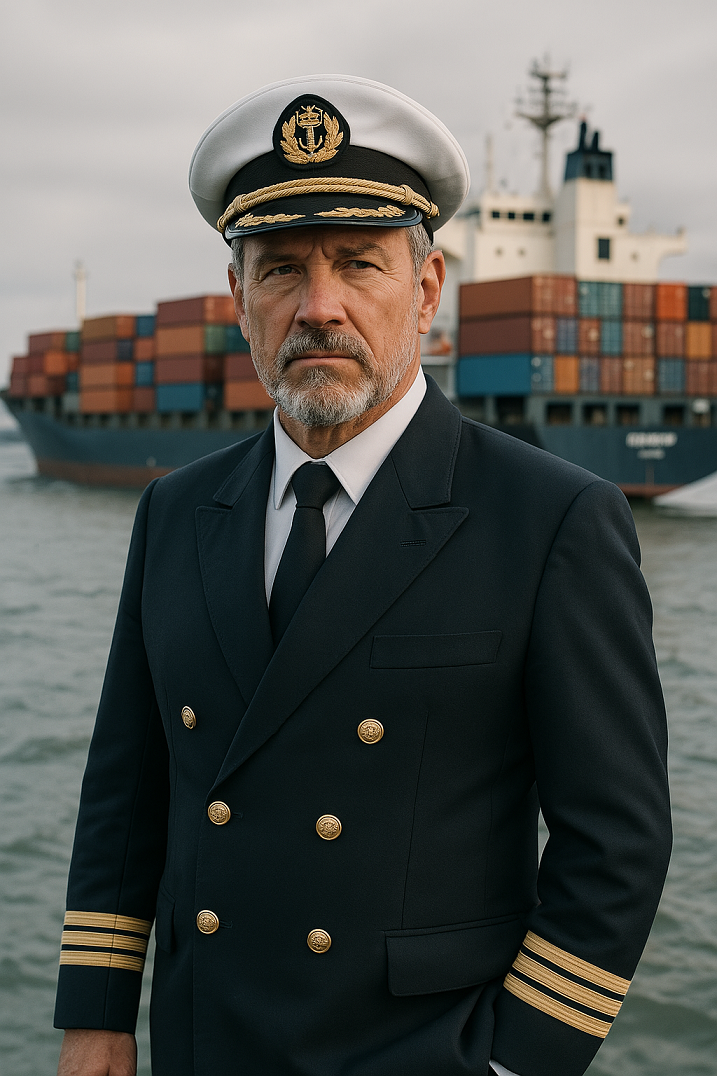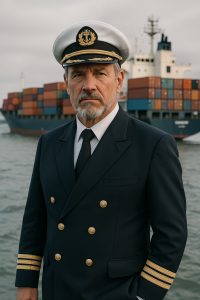What Does It Take to Lead a Ship?
Imagine being at sea, navigating through heavy fog, tight straits, or stormy waters, with hundreds of lives and millions of dollars in cargo depending on your every decision. The responsibility is immense—and so is the preparation. For a ship’s captain or a chief navigation officer, passing the certification exam is not just a milestone; it’s proof of readiness for a demanding, global role.
This article explores the structure, significance, and sample questions of maritime exams for vessel masters and navigation officers, offering value to cadets, professionals, and curious minds alike.
What Are These Exams? A Primer for Beginners
Who are Captains and Chief Navigation Officers?
-
Captain (Master): The overall commander of the ship, responsible for navigation, safety, legal compliance, crew welfare, and communication with ports and authorities.
-
Chief Officer (Chief Mate or Navigation Officer): Second-in-command, often in charge of cargo operations, ship stability, and watchkeeping on the bridge.
Why Are Exams Required?
Governed by the STCW Convention (Standards of Training, Certification, and Watchkeeping), these exams ensure global maritime personnel meet standardized competency levels.
Types of Exams:
-
Oral (viva voce)
-
Written (multiple-choice, descriptive)
-
Practical (simulator or onboard assessment)
Topics Covered:
-
Navigation and ship handling
-
International maritime law and conventions
-
Meteorology
-
Cargo handling
-
Stability and ballast systems
-
Emergency procedures and risk management
-
Crew management and communication
Core Knowledge Areas: From Charts to Crises
1. Navigation and Ship Handling
Captains and navigation officers must demonstrate an advanced understanding of:
-
Celestial and terrestrial navigation
-
Use of ECDIS and radar systems
-
Collision avoidance (COLREGs)
-
Maneuvering in confined waters
-
Passage planning and route optimization
Sample Question:
Q: Describe the procedures for safe anchoring in a congested port during low visibility.
A: Requires understanding of radar, AIS, chart analysis, communication protocols, and contingency planning.
2. Maritime Law and Compliance
Understanding international conventions is crucial:
-
SOLAS (Safety of Life at Sea)
-
MARPOL (Pollution Prevention)
-
ISM Code (Safety Management Systems)
-
Flag state vs port state responsibilities
Common Topics:
-
Master’s legal obligations during collisions, salvage, or detention
-
Incident reporting and logbook entries
-
Rights and duties under maritime labor laws
3. Meteorology and Environmental Awareness
Mariners must interpret weather patterns and apply meteorological tools effectively:
-
Using synoptic charts and satellite images
-
Tropical cyclone avoidance
-
Wave dynamics and their impact on ship stability
Sample Case Study:
A vessel encounters a sudden drop in atmospheric pressure mid-voyage. What should the master anticipate and how should the course be altered?
Professional Insight: Exam Techniques and Best Practices
Real-World Case Studies in Exams
Exam boards are moving beyond rote knowledge toward scenario-based assessments. Candidates must apply theory to real-world decisions:
-
Handling piracy threats in the Gulf of Aden
-
Responding to onboard fires while in port
-
Making command decisions during machinery failure at sea
Pro Tip: Examiners often look for a structured response:
-
Identify the issue
-
Describe the procedure
-
Justify the action with regulations or past experience
Evolving Trends and Digital Competency
With digitalization in maritime operations, questions may now assess:
-
Use of electronic charts and integrated bridge systems
-
Cybersecurity threats on ships
-
Remote inspection protocols
-
Use of maritime AI and predictive analytics
Recent Developments: What’s Changing in Certification?
Updated STCW Requirements
The IMO (International Maritime Organization) is in the process of revising STCW to include:
-
Decarbonization awareness
-
Advanced digital competencies
-
Human factor training and fatigue management
Rise of Simulation-Based Exams
Modern exam centers, such as Maritime Simulator Training Academies, now incorporate full-mission bridge simulations to assess command performance under stress.
National Variations in Exams
Though STCW sets global standards, actual exams vary slightly by country:
-
UK (MCA) includes detailed orals and a focus on COLREGs
-
US (USCG) blends written and simulator-based tests
-
Italy (MIT) requires extensive knowledge of both international and national laws, with oral assessments often conducted by port captains
FAQs: People Also Ask
What are the most common questions in a captain’s exam?
Topics often include:
-
Collision regulations
-
Ship stability and trim
-
Legal duties during emergencies
-
Passage planning steps
Is the chief officer exam different from the captain’s exam?
Yes. While overlapping in navigation, the chief officer exam focuses more on cargo operations, stability, and watchkeeping. The master’s exam emphasizes command responsibility, law, and safety management.
How do I prepare for the captain’s oral exam?
-
Review IMO model courses
-
Practice scenarios in simulators
-
Study past exam reports or attend prep classes
-
Develop clear, structured answers
What qualifications are required to take the exam?
-
Required sea service (typically 12–36 months, depending on rank)
-
Valid STCW certificates
-
Medical fitness certification
-
Approved training courses completed
Real-Life Relevance: Why These Exams Matter
A captain or chief officer not only navigates ships—they lead teams, manage crises, and represent the vessel internationally. Passing these exams is more than a career milestone; it’s a certification of leadership, responsibility, and trustworthiness at sea.
Example:
The grounding of the Ever Given in the Suez Canal highlighted the critical role of navigation expertise. Case studies like this often appear in exam discussions to assess command decision-making under pressure.
Conclusion
Whether you’re an aspiring deck officer, a maritime educator, or simply fascinated by the sea, understanding the scope and depth of these exams reveals the high standards the maritime world holds. These tests are not barriers but gateways to global leadership, safety, and sustainability in shipping.
Ready to Dive Deeper?
Explore free maritime training resources, sample oral questions, and simulation tools on MaritimEducation.com and global authorities like IMO.org.
References & Further Reading
-
IMO Model Courses for Master and Chief Mate
-
STCW Convention – Full Text: https://www.imo.org
-
UK MCA Oral Preparation Guide: www.gov.uk
-
USCG Licensing & Exams: https://www.dco.uscg.mil/nmc
-
MIT Italy Navigation Exams Info: www.mit.gov.it


